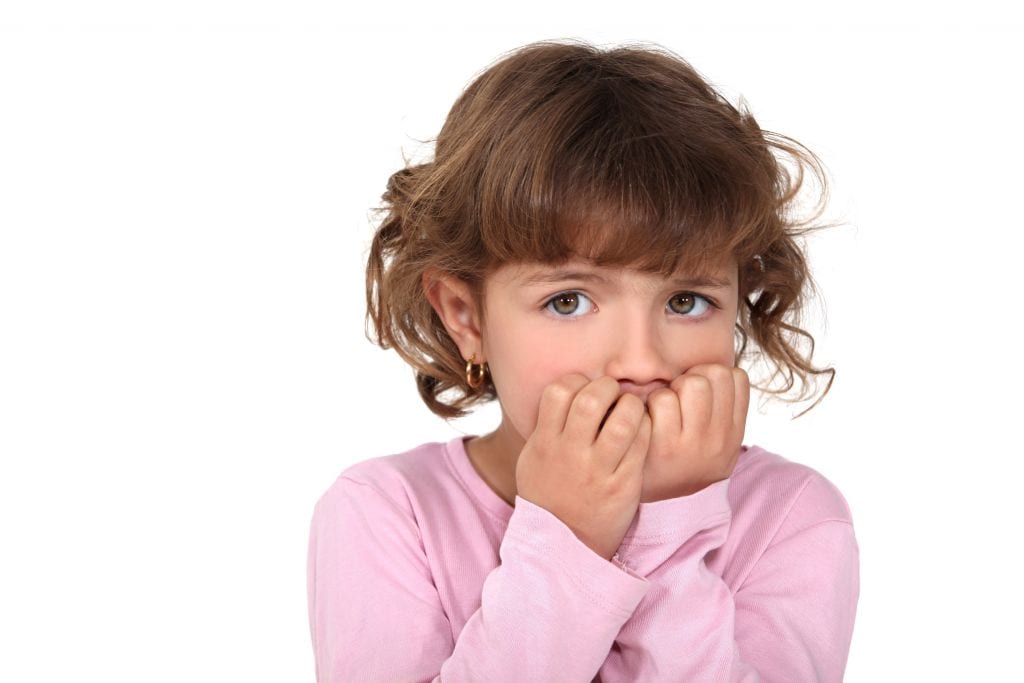What is anxiety?
Anxiety is a normal human response to stressful, unfamiliar or dangerous situations. It refers to a state of uneasiness, fear or worry. Anxiety is often helpful, as it protects us and enhances our performance under stress. For example, a fear of fire will protect a child from getting burnt, and anxiety before a running race can lead to peak performance. All children experience anxiety and fearfulness from time to time, and in most cases it is transient or short-lived. However, when anxiety becomes too intense, frequent, or occurs at inappropriate times, it is extremely distressing and sometimes disabling. As children have many developmental tasks to achieve, it is important to ensure that anxiety does not interfere with them leading a normal life. If it is, then it may be time to seek help.
How can a parent recognise that their child has anxiety?
There are three main systems of anxiety, the physiological system (the body), behavioural system (what we do), and cognitive system (thoughts). Physiological symptoms include muscle tension, faster breathing and heart rate, headaches, feeling hot and sweaty, nausea and tummy-aches. Anxious behaviours tend to be aimed at avoiding a feared situation. For example, your child may become more clingy, distractible or impulsive, seek reassurance, stall, or may throw a tantrum. Children are not always able to put their thoughts into words, so it can be difficult to know exactly what is going through your child’s mind.
Types of anxiety disorders in children include:
Separation anxiety
Fear of being apart from care-givers. The fear may become so intense that the child refuses any separations, like school or sleep overs.
Generalised anxiety
Excessive worry about numerous areas of life, e.g. school, health, family issues. The worry may be so intense it leads to general physical tension, difficulty sleeping and issues such as nausea and diarrhoea.
Social phobia
Fear of social situations, due to being overly concerned about the judgements that other people may be making, and worry about doing something embarrassing.
Specific phobia
Fear of a particular thing (e.g. dogs) or type of situation (e.g. small spaces).
Panic attacks
A panic attack occurs when many physical anxiety symptoms are experienced along with catastrophic thoughts like “I’m going crazy” or “I’m dying”. It can be thought of as a fear of fear.
How anxiety changes
The nature of anxieties and fears tend to change as children grow. Babies may be fearful of strangers and loud sounds, whereas toddlers are likely to experience separation anxiety. Pre-schoolers and early primary school children may be scared of the dark and fear supernatural things like ghosts or monsters, whereas in later childhood/adolescence, children may fear the possibility of real situations such as poor school performance, becoming sick/injured, or of natural disasters. Some fears may naturally disappear as your child grows, some becoming replaced by another fear.
What causes anxiety problems in children?
A combination of factors are known to cause anxiety. It tends to run in families, can sometimes be learnt (for example, through watching others or through receiving accidental rewards for anxiety), or may occur in response to a traumatic event. Children who have a shy temperament are more prone to developing difficulties with anxiety.
What can parents do to help a child with anxiety issues?
Anxiety tends to be contagious, so it is important to stay calm yourself when your child is upset, and to be a good role model about how you manage your own anxiety. Empathise with your child about how they are feeling: even if the fear seems trivial, it is real to your child, and it is crucial not to belittle it. However it is equally important not to cater to the fears as this will only help them grow. Instead, provide gentle encouragement to approach feared situations, which may be best done in a gradual, step-by-step way.
Assisting your child to cope with uncertainty is a very important skill, and often more helpful than providing reassurance when your child is entering an unfamiliar situation. You can also help your child reduce physiological symptoms of anxiety through deep breathing, relaxation, or doing a calming activity, and can help your child identify helpful thoughts and self-talk like “I can do it”, “I will be ok”.
If you are concerned that your child’s anxiety is holding them back from doing the things they want to do, getting adequate sleep, making friends, or participating in school, it is wise to seek professional help. Anxiety disorders are the most common of all mental health complaints, and are very treatable. It may be helpful to speak with your child’s school guidance officer, and your GP/paediatrician can assist you with a referral to a psychologist or other mental health clinician.
Dr Angela Randell
Senior Psychologist
Child and Youth Mental Health Service
Children’s Health Queensland Hospital and Health Service
For more information:
This article was published in Issue 5 of our print magazine, August/September 2014.


